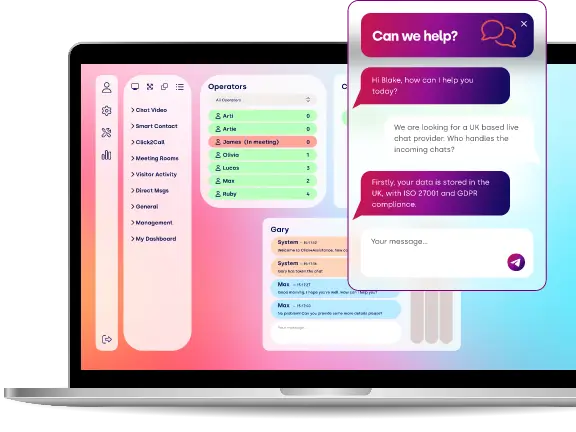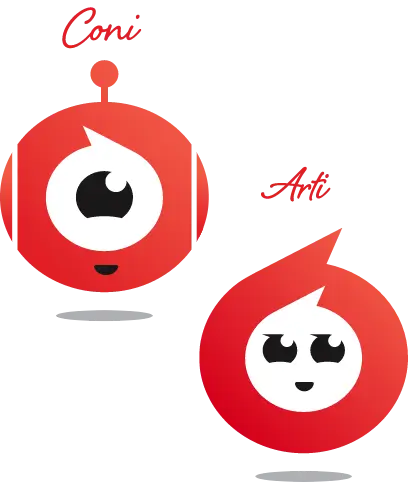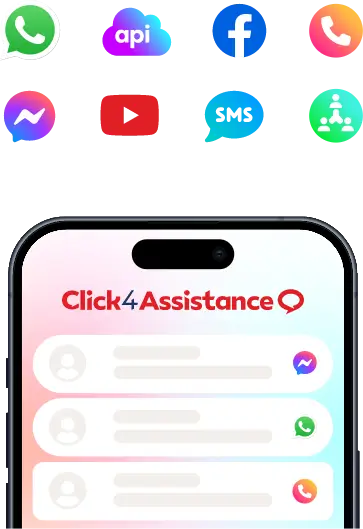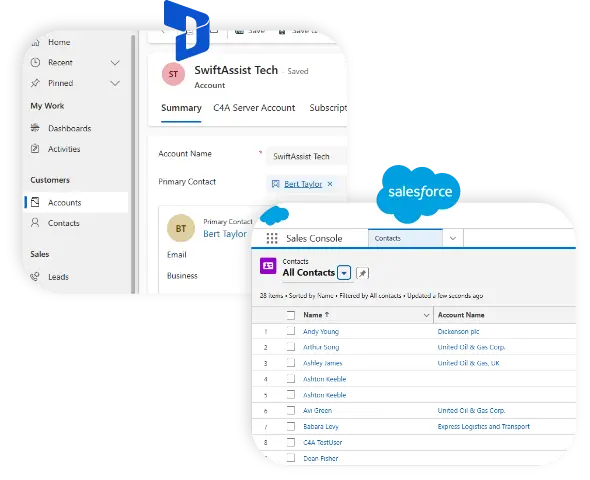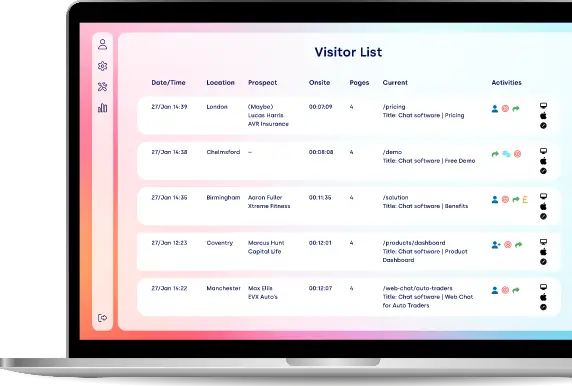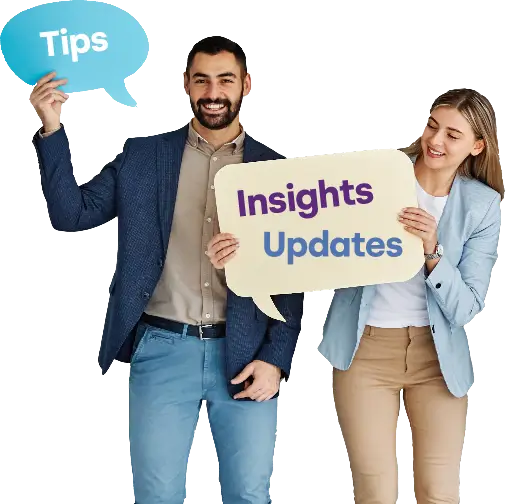SMS Text Messaging for Business Websites
SMS Messaging is a fantastic way for businesses to connect with their customers in real-time, enhancing engagement, support, and conversions. It provides a simple and reliable channel right from your website.
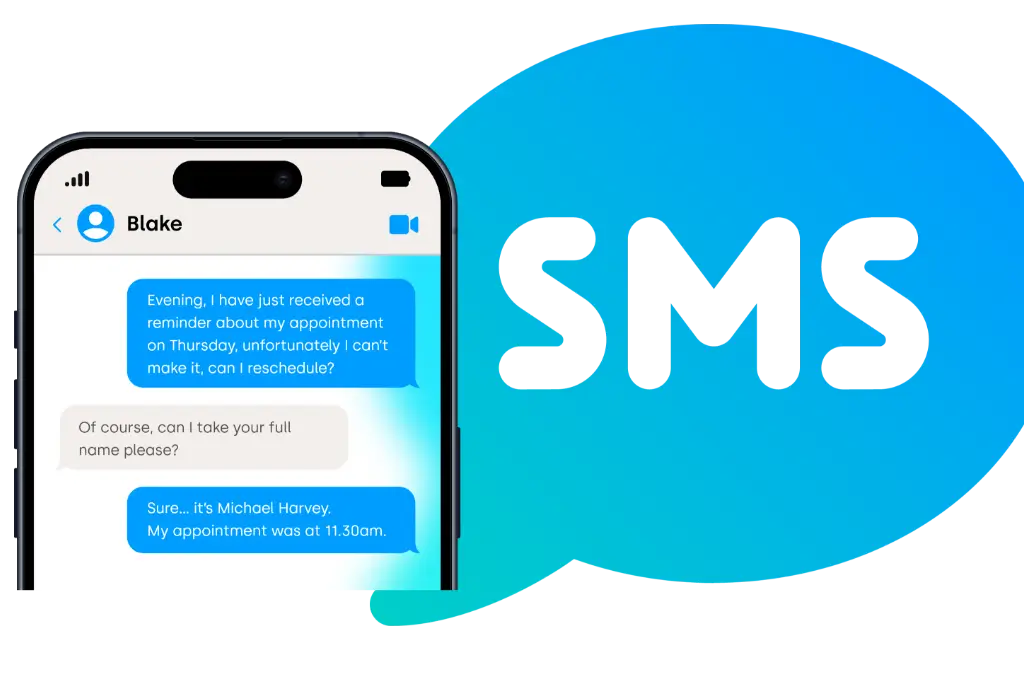
Imagine this: A customer visits your website, browses a product, and then quietly exits without buying. You send a follow up email but it gets lost in their crowded inbox. This is where SMS for business websites comes in. Text messaging is immediate, direct, and hard to ignore – making it the perfect tool to turn interest into action.
SMS is not just about sending appointment reminders or occasional promotions. It’s a seamless connection between your website and your customers daily lives. When a business communicates quickly and clearly customers not only get the information they need but also start to trust the brand more. That trust leads to loyalty and loyalty is the key to long term growth.
If you’re also considering other messaging options, don’t overlook WhatsApp for Business API or Text Messaging for Customer Service and Support. These work beautifully alongside SMS giving businesses the flexibility to reach customers who prefer traditional text messaging and those who prefer app-based communication.
As digital strategist Sarah Thompson said:
“SMS is like a friendly nudge – it’s personal, immediate and keeps the conversation going”.
With nearly everyone carrying a mobile phone, businesses have a great opportunity to connect with their audience anytime, anywhere.
In this guide we’ll look at why SMS is important for business websites, practical use cases, the integration process, best practices and what the future holds for this powerful communication channel.
The Importance of SMS for Business Websites
We’re living in a world of information overload. Emails pile up, push notifications get ignored and social media ads fight for our attention at every turn. But text messages? They cut through the noise. They grab our attention. They get read. And they often get a response.
Here’s why SMS is so important for business websites:
- Instant Engagement
Studies show SMS has an open rate of almost 98% - compared to 20-30% for emails, according to Gartner’s marketing insights. That means almost every message you send will get to your audience.
Imagine you’re running a 2-hour flash sale. An email might get lost in the inbox but an SMS will get to your customers straight away and increase the chances of your promotion being a hit.
- Clear and Simple Communication
No apps. No downloads. No logins. Just a text. SMS removes the barriers that stop customers from engaging.
Think of it this way – if email is like a long letter, SMS is more like a sticky note on the fridge. It’s brief, to the point and easy to consume.
- Better Customer Experience
Customer experience goes beyond how your website looks or how smooth the checkout process is. It’s about how quickly and easily a customer can get the information they need.
Imagine a visitor on your site who has a question about your services. Instead of filling out a long form they shoot you a text and get a response in minutes. That quick, personal interaction not only answers their question – it builds trust and loyalty.
- Get Ahead of the Game
Let’s be real: a lot of businesses are still stuck on email and web forms. By getting on the SMS train early, you’re showing you care about quick responses and make things easy for customers.
Imagine this: while your competitors are stuck in the “email lane”, you’re zooming past in the “fast lane” of SMS. Customers love fast service and they reward you for it by sticking around.
- Everyone Has a Mobile Phone
Another reason SMS is so powerful is its universality. Not everyone checks their email all the time, but almost everyone checks their phone several times a day. In fact, mobile services now reach over 5.6 billion people worldwide – with billions using mobile phones daily – underscoring SMS’s universal reach, according to the GSMA Mobile Economy report.
Whether your audience is tech-savvy teens, busy professionals or older folks who might not be on every social media platform, SMS works for everyone.
Use Cases for SMS on Business Websites
When it comes to business websites, SMS is not a one-trick pony – it can be used for almost any industry and goal. Whether you’re in retail, healthcare, estate agents, or education, SMS can communicate and create urgency. Let’s get into some of the most common and effective uses:
- Customer Service and Support
Imagine a visitor lands on your FAQ page but still has questions. Instead of getting frustrated and leaving, you offer a “Text Us” button. In a few seconds they’re chatting with an AI-powered chatbot that can handle simple questions and pass on the tricky ones to your human support team.
This is a game changer for industries like telecom, utilities, and insurance. Customers don’t want to be on hold or wade through endless articles - they want quick answers. SMS provides that instant gratification.
- Marketing and Promotions
When done right, SMS marketing feels like a friendly nudge not an annoying interruption. Imagine a pop-up on your site that says: “Get 10% off your first purchase! Enter your number to receive your discount code via text.”
From there you can send:
- Flash sales (like “Only 2 hours left – buy one get one free!”)
- Personalised offers (based on their browsing history)
- Event invites (for webinars or store openings)
Retailers love this immediacy. Unlike emails that get ignored, SMS promotions are opened within minutes which can increase conversion rates significantly.
- Order Updates and Appointment Reminders
Nobody likes to be left in the dark about their order. With SMS, you can send real-time updates to your customers every step of the way.
For example:
E-commerce: “Great news! Your order has shipped and will arrive tomorrow.”
Healthcare: “Just a heads up: Your dental appointment is scheduled for tomorrow at 10 AM. Reply CONFIRM to keep or RESCHEDULE if you need to.”
Service industries: “Heads up! Your plumber is on the way and will be there in 15 minutes.”
These little notifications can reduce no-shows, cut down on questions and boost your brand’s trust.
- Two-Factor Authentication (2FA)
Keeping your website secure is important. SMS verification codes add an extra layer of security for logins, financial transactions, and any account changes.
Banks, fintech companies and even online learning platforms use SMS 2FA to make customers feel secure about their data. It’s fast, familiar, and easy for everyone to use – no extra apps needed.
- Lead Generation and Nurturing
Lead nurturing is where SMS really comes into its own. Imagine a visitor browsing property listings on an estate agents website. They sign up for SMS and before long they get a message like, “Hi Sarah! We thought you might be interested in this 3-bedroom house nearby. Click here to learn more.”
Thanks to AI automation you can set up nurturing sequences that:
- Share valuable tips to educate your leads
- Offer exclusive content or discounts
- Encourage customers to book a demo or consultation
SMS gets you from “interested” to “ready to buy” faster than many other channels.
- Industry-Specific Use Cases
To show the flexibility of SMS, let’s look at some industry-specific examples:
- Education: Keep students informed about class cancellations, exam schedules, or urgent announcements.
- Hospitality: Send check-in instructions, spa deals, or restaurant reservation confirmations.
- Events: Share last minute updates, ticket QR codes or special VIP offers.
- Nonprofits: Use SMS to ask for donations with clear, actionable requests.
How to Add SMS Text Messaging for Business Websites
You know the “why”. Now the real question is: How do you add SMS to your website? Good news – it’s easier than you think.
- Opt-In Forms and Widgets
First, make it easy for customers to subscribe. Add eye-catching forms or pop-ups on your site that ask for a phone number in exchange for something valuable.
For example, on a product page you might say: “Want to be the first to know when this is back in stock? Share your number for updates.”
Pro Tip: Be clear about what subscribers can expect. Transparency builds trust and helps you stay compliant with data protection laws like TCPA and GDPR.
- Click-to-Text Buttons
A click-to-text button opens the user’s SMS app with a pre-written message ready to go. This is super useful for mobile users who make up most of your online traffic.
Great places for click-to-text buttons:
- Website headers
- Contact pages
- Checkout or support sections
Imagine being on a service page and sending your question in seconds without leaving the site. This seamless connection is huge for engagement.
- AI Chatbots + SMS
Now things get really cool. AI chatbots have moved beyond websites – they can now talk directly to you via SMS. Here’s how it works in real life:
- A customer starts a chat with a bot on your website.
- The bot handles basic questions and collects info.
- If the customer leaves, the conversation picks up where it left off via SMS.
This means:
- 24/7 support without human staff on duty
- Lead qualification that feels natural and personalised
- Easy handoffs to human agents for more complex questions
Want to learn more? Check out the AI Agent Chatbot from Click4Assistance and see how they can change your support strategy.
- CRM and Marketing Platform Integration
To get the most out of SMS, connect it to your CRM or marketing automation platform.
This means:
- Automated follow-ups based on customer interactions.
- Customised campaigns based on browsing or purchase history.
- Analytics to track open rates, click-through rates, and conversions.
For example: A visitor downloads your free guide. Three days later they get a text: “How are you finding the guide? Here’s a special offer on your premium plan, just for you.”
When connected properly, SMS goes from being a simple tool to a key part of your marketing slack.
All Messaging Channels from One Platform
Handle all your customer interactions from live chat, WhatsApp and Facebook Messenger within one powerful platform.
Best Practices for SMS on Business Websites
Even the best SMS systems can fail if not used properly. Stick to best practices and your campaigns will be effective, user-friendly, and compliant.
Get Clear Consent
Opt in should always be easy and transparent. Users need to opt in willingly and you need to tell them what kind of content they can expect.
Think of consent as a handshake, it’s all about mutual respect and setting clear expectations. Ignore this and you’ll hurt your reputation and might even break TCPA or GDPR.
Personalise Without Being Creepy
Personalisation can increase engagement but you need to find the right balance. Use first names, reference recent purchases or tailor offers based on browsing history – but always respect boundaries.
Example:
✅ “Hi Sarah, your favourite sneakers are back in stock!”
❌ “We know you’ve been thinking about sneakers for months, buy now!”
Keep Messages Short and Sweet
SMS isn’t email. Long messages get ignored. Go for short, actionable messages with a clear CTA.
Example: “Your appointment is tomorrow at 10 AM. Reply CONFIRM to confirm or RESCHEDULE to change.”
Easy Opt-Outs
Make sure you give your audience an easy way to unsubscribe. A clear “Reply STOP to unsubscribe” builds trust and makes your audience feel free not trapped.
Balance Frequency
Sending too many messages can make your audience opt out and feel annoyed. Only send communications that are timely, relevant, and helpful.
For example: Flash sales, restock alerts, important updates. Don’t send weekly messages unless your audience has asked for them.
Integrate AI Smartly
AI chatbots can handle replies and create personalised campaigns but make sure there’s an easy transition to human support.
For example: The bot can answer FAQs but pass billing questions to a human rep. This way you provide a seamless and trustworthy experience.
As marketing expert Jenna Clarke says “A well-crafted text message is like a handshake—it’s brief, polite and leaves a strong impression.”
Test and Improve
Always test A/B on message timing, wording, and CTAs. Use analytics to track your messages and refine your campaigns. Over time, small tweaks can add up to big engagement rates.
Common Challenges and How to Fix Them
Even the best SMS strategies hit a few bumps. Here’s how to get around them:
- Regulatory Compliance and Privacy: Stay up to date on TCPA, GDPR and local regulations. Make sure you explain your messaging policies to your audience.
- Message Overload: Don’t flood your audience with too many messages. Focus on quality over quantity.
- Scalability Issues: As your audience grows use AI chatbots and automation to handle the volume.
- Integration Problems: Choose platforms that integrate with your website and CRM. Don’t use isolated tools that create friction.
The Future of SMS for Business Websites
SMS isn’t going away – it’s just getting better. Companies that adapt now will be the ones leading the way. Here’s what you can expect:
- AI-Powered Personalisation
AI is making SMS personal. Instead of sending one-size-fits-all messages, AI can customise texts based on what customers browse, buy, and even their emotions. Imagine a visitor to your site getting a message like: “Hey John, we saw you’re looking at our eco-friendly backpacks. Here’s a 10% discount just for you!”
- Chatbots and SMS
The future is in combining AI chatbots with SMS. These bots won’t just answer questions on your website; they’ll follow up via text too, keeping the conversation going even after the visitor leaves. This “always-on” communication increases engagement, satisfaction, and conversion rates.
- Rich Communication Services (RCS)
RCS is the next level up from SMS. It allows for multimedia messages, carousels, buttons, and interactive content - all through a text interface. Businesses can send more dynamic updates, product catalogues or promotional messages and create a more engaging experience than SMS.
- Data and Informed Decisions
Future SMS strategies will be data driven. By tracking open rates, click-through rates and conversions businesses can refine their campaigns, improve their messaging, and get deeper insights into customer behaviour.
- Integrated Omnichannel Communication
SMS won’t be a silo. The best websites will integrate SMS with email, social media, and messaging apps. This will create a seamless multi-channel experience where customers can interact however they want.
As digital strategist Liam Carter says: “SMS is no longer just a text; it’s a bridge between websites, apps and real conversations with customers.”
Frequently Asked Questions (FAQs)
- How can I add SMS messaging into my business website?
You can easily integrate SMS features by using opt-in forms, click-to-text buttons, or even AI chatbots. By linking it to your CRM, you can set up automated and personalised messaging that really connects with your audience.
- Is it legal to use SMS messaging for marketing?
Absolutely! It’s legal, but you need to get clear consent from your users first. Make sure to follow regulations like TCPA and GDPR, and always provide an easy way for people to opt out.
- Are AI chatbots capable of handling SMS conversations?
For sure! AI chatbots can handle FAQs, qualify leads, and pass on more complicated issues to human agents. They’re great for keeping the conversation going 24/7 while still adding a personal touch.
- How does SMS marketing stack up against email marketing?
SMS has much higher open and response rates. People usually read messages almost right away, which makes SMS a powerful tool for urgent promotions, updates, or reminders.
- What does the future hold for SMS in digital marketing?
The future of SMS looks bright with advancements in AI personalisation, RCS for rich media, and smooth omnichannel integration. Businesses that combine SMS with chatbots and analytics will really shine in engaging their customers.
Conclusion
SMS is often overlooked but it’s one of the most powerful tools for business websites. It’s fast, accessible, and personal where email and apps can’t be on their own. By integrating SMS, using AI chatbots for 24/7 support and following best practices businesses can:
- Increase customer engagement and satisfaction
- Drive sales and conversion rates
- Send timely updates and reminders
- Build loyalty through personalisation
SMS isn’t just another way to communicate, it’s a way to make your website feel more human, responsive and customer focused. Businesses that get SMS now will have stronger relationships; better retention and a head start on the competition tomorrow.
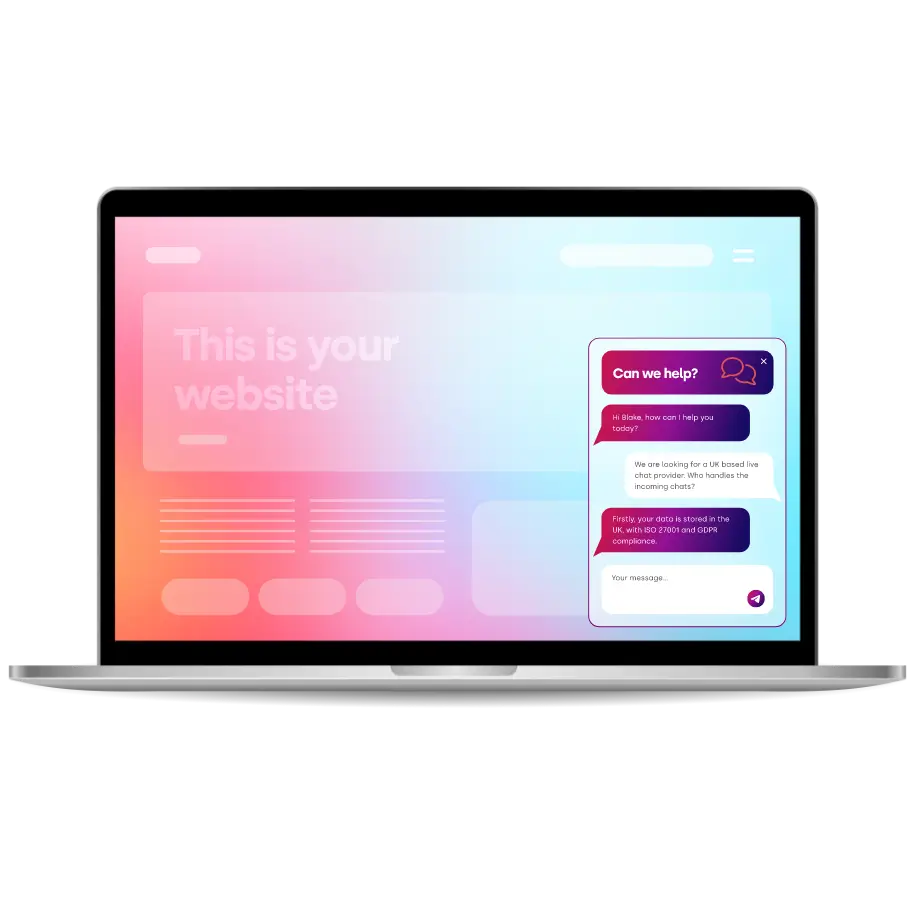
Thousands Trust Us. Will You?
From live chat to AI-powered chatbots and social integrations, Click4Assistance powers real-time engagement - fully UK hosted and trusted across industries.
